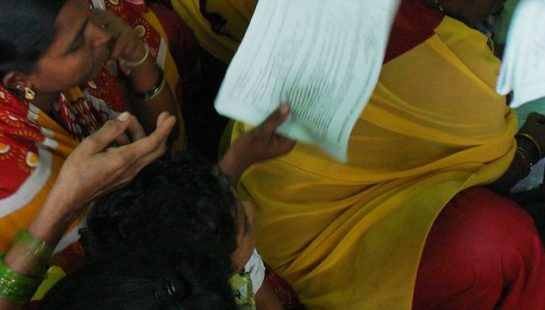Rana Plaza: A Crisis of Unimaginable Scale
Seven years ago, on 24 April 2013, the global garment industry was turned upside down with the collapse of the Rana Plaza building in Dhaka, Bangladesh.
It was a crisis of unimaginable scale.
The day before the collapse, workers had noticed cracks in the walls and told their managers that it was unsafe for them to be inside, only to be told that if they didn’t go back in and continue working, they wouldn’t get paid for that month.
The morning of the collapse, there was a power outage in the area and generators were turned on. The vibrations from those generators were enough to bring down the walls of the factory.
More than 1,132 workers lost their lives and thousands more were critically injured.
It was, at that time, the worst crisis the garment industry had ever faced.
A Year Unlike Any Other To Reflect
Each year on the 24th of April, we take the time to reflect on the collapse of Rana Plaza.
We remember what went wrong and ask what measures brands, governments, factories and workers have put in place to ensure that this doesn’t happen again. We reflect on the progress – albeit slow in some areas – that the industry has made in protecting the rights of workers since then.
But this year’s anniversary, like everything in our world right now, feels different for us all.
Because as we take time to remember one crisis, another one is unfolding before our eyes.
COVID-19 not only has the potential to wind back the significant progress that the industry has made since Rana Plaza, but it is already proving catastrophic for millions of vulnerable garment workers around the world.
Surging Unemployment For Garment Workers
Economically, millions of garment workers are now unemployed, or on the brink of unemployment. As global fashion companies cancel or suspend orders due to the pandemic, factories are closing their doors, with little or no choice but to dismiss their workers in droves. For some, their dismissal comes with a month’s salary, but for most, they are left empty-handed, with barely any savings to draw on.
In Bangladesh alone, more than 1 million workers have already been let go (as of 3rd April). In Myanmar, 20,000 garment workers have lost their jobs and in Cambodia, it has been estimated that 200,000 garment workers could lose their jobs
Many of these producing countries do not have social safety nets we do, and workers were already surviving on poverty level wages before the pandemic. They are now wondering how they will care for their families in the coming days, weeks, and months.
Health & Safety Also Under Threat
For garment workers, their health and safety are also under threat. For those working in the 40,000 factories and mills in Tamil Nadu, dormitory-style living conditions are the norm. Their dismissal will likely result in overcrowded rooms, as the lack of shift work will mean all workers will require lodging at once. In conditions like this, social distancing is near impossible, and the risk of the virus spreading is incredibly high. Others, in Bangladesh for example, will be unable to return home due to the suspension of public transport, and so will likely be stuck in crowded hostels – posing enormous health and safety risks, particularly for women.
For those who are still working, either due to the lack of lockdowns, or factory owners ignoring lockdown regulations, the risk of infection is also high. In many factories and mills, workstations have very short spaces between them, and are often shared by multiple people with no sanitary facilities for handwashing. Given how desperately many workers rely on this income, and a lack of sick leave, its also likely that workers will be turning up to work with mild or no symptoms – quickly enabling the virus to take hold of an entire factory or mill.
40 million people are employed in the garment industry across the Asia-Pacific, all of whom are – in one way or another – going to face unprecedented challenges to their health, safety and livelihoods as a result of this crisis.
The Legacy Of Rana Plaza
One of the most significant legacies of the Rana Plaza crisis was the way it catapulted the plight of millions of garment workers to the front of mind for consumers, governments, and brands. It was a wake-up call to the world; a turning point in the history of the garment industry. Brands could no longer say they didn’t know or care about how their workers were being treated.
As we all face the unprecedented challenges that the COVID brings, this legacy is more important now than ever before.
We cannot forget about the plight of these workers.
Next week, we will launch a new campaign, centered around key commitments that brands should make to protect workers in their supply chains in this current season and beyond.
As the crisis unfolds in garment-producing countries, we stand ready to amplify the voices of workers, to work with brands to see worker rights protected, and to pray for decision-makers in those nations.
And we will provide ways for you to stand with us in this important work too.
We hope you’ll join us!
This article is from a five-part series on ethical fashion and the global fashion industry. To see all five parts, please click here.



 Baptist World Aid
Baptist World Aid

 Ally Turner
Ally Turner